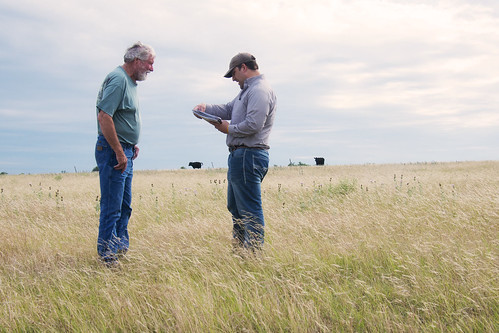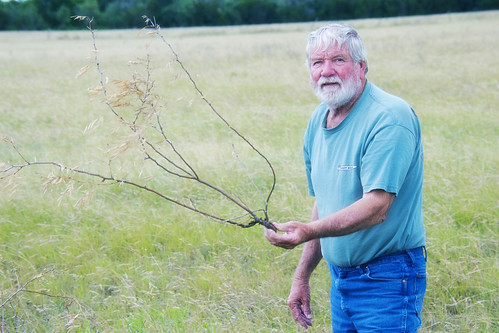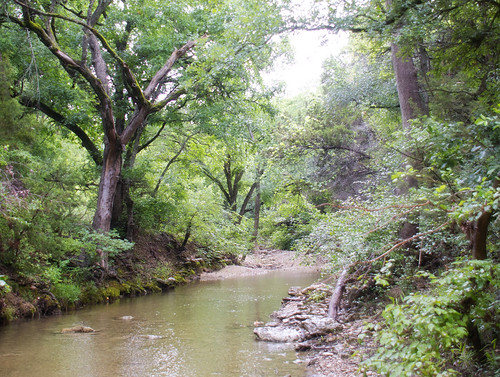
“I don’t like crowds, and I don’t like busy highways,” says Crawford, Texas rancher Larry Mattlage. “That crazy world out there can get me frustrated and upset. This land is where I am most at ease.”
He was raised on the land his German immigrant grandfather settled on in the late 1880s. The 400 acres Mattlage now owns — High Prairie Ranch — has been in the family since 1904.
“This land is just part of my DNA; it’s who I am,” he says. “When I walk on the ground where my ancestors walked, it’s like that poem, Footprints in the Sand. I feel like they are walking with me along every step of my journey out here. It’s really a spiritual thing.”
Mattlage has been the sole owner and manager of High Prairie Acres for the last 20 years. For as long as he can remember, his family has been working with the USDA’s Natural Resources Conservation Service (NRCS) to make conservation improvements that benefit the operation and natural resources.
“They aren’t making any more dirt,” said Mattlage. “We have to do what we can to save what we have. This land is really special to me, and I want to do everything I can to take care of it. I feel like I owe it to the generations that came before me.
After earning a master’s in agriculture education, Mattlage returned to his live oaks, wide open grasslands and rippling creek with an even greater appreciation to improve his land.

Mattlage is using conservation practices such as brush management, cross fencing and water development to conserve soil, improve water quality downstream and enhance wildlife habitat. He runs a commercial cow-calf operation, with a rotational grazing program designed to benefit wildlife habitat. He has done extensive brush removal of invasive prickly pear cactus and cedar and mesquite trees with brush sculpting techniques that provide excellent wildlife hiding cover and habitat.
Because of his high level of stewardship activities, Mattlage was awarded a five-year contract through the agency’s Conservation Stewardship Program (CSP) in 2010. He felt he accomplished so much through the program, he opted to renew his contract for another five years in 2015.
One of the CSP enhancements Mattlage chose was to defer grazing on one third of his entire ranch at all times, giving those areas a time to rest. Grazing is deferred during nesting and fawning season to help the young wildlife species get established uninterrupted, while also providing important food sources without any pressure from grazing.
It seems to be working: on any given day one can find flocks of turkey, multitudes of whitetail deer, armadillos, colorful birds and other wildlife species on display at the ranch.
While Mattlage doesn’t allow hunting on his ranch, the property does boast some trophy wildlife. He has some prime grazing land with fat, healthy cows, and the scenic aspects of the property are postcard worthy.
“I take the most pride in making sure soil doesn’t wash in our creeks and lakes. My soil’s health is really important to me. It’s the foundation of everything that happens out here.”

